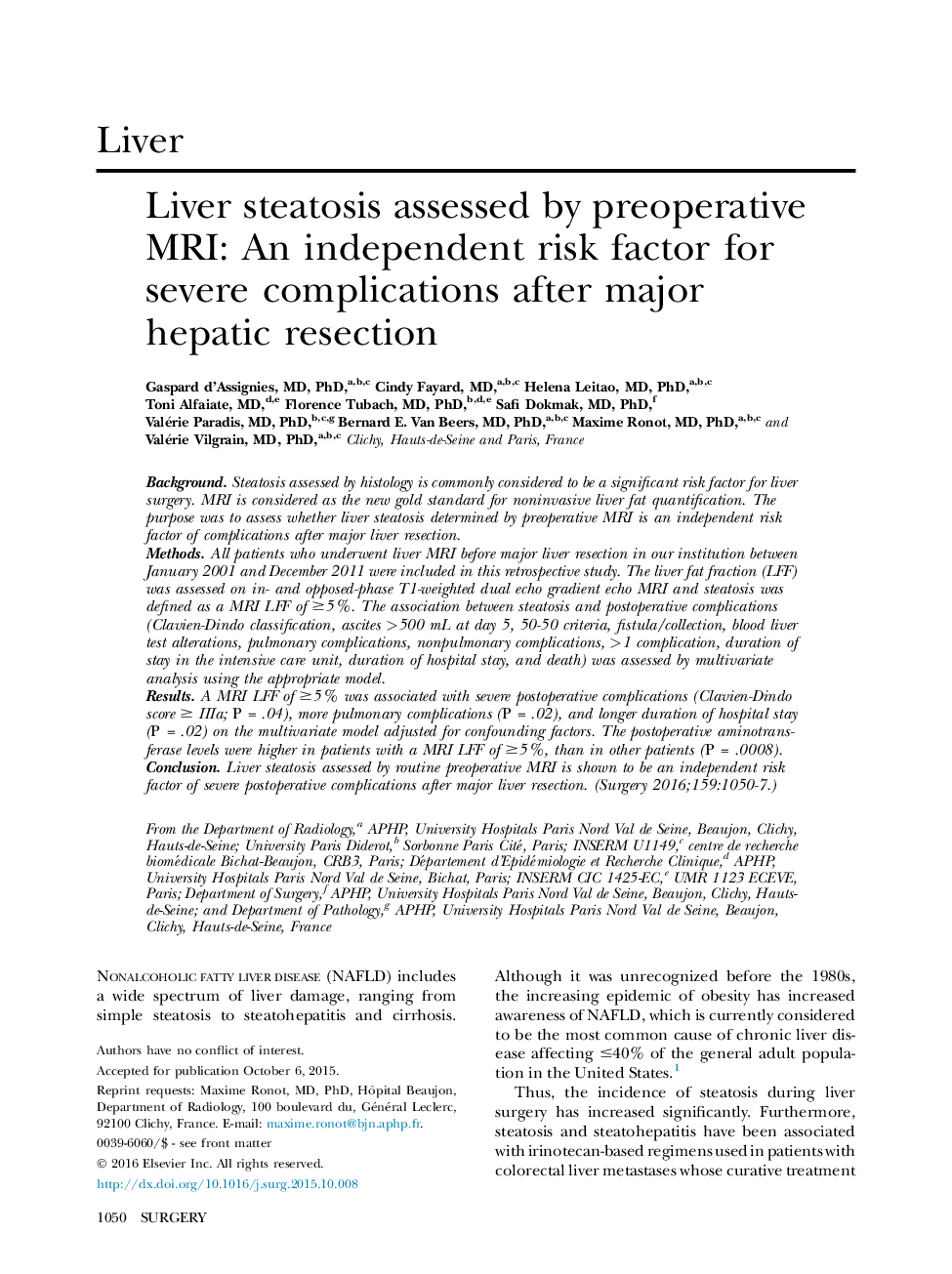| Article ID | Journal | Published Year | Pages | File Type |
|---|---|---|---|---|
| 4306495 | Surgery | 2016 | 8 Pages |
BackgroundSteatosis assessed by histology is commonly considered to be a significant risk factor for liver surgery. MRI is considered as the new gold standard for noninvasive liver fat quantification. The purpose was to assess whether liver steatosis determined by preoperative MRI is an independent risk factor of complications after major liver resection.MethodsAll patients who underwent liver MRI before major liver resection in our institution between January 2001 and December 2011 were included in this retrospective study. The liver fat fraction (LFF) was assessed on in- and opposed-phase T1-weighted dual echo gradient echo MRI and steatosis was defined as a MRI LFF of ≥5%. The association between steatosis and postoperative complications (Clavien-Dindo classification, ascites >500 mL at day 5, 50-50 criteria, fistula/collection, blood liver test alterations, pulmonary complications, nonpulmonary complications, >1 complication, duration of stay in the intensive care unit, duration of hospital stay, and death) was assessed by multivariate analysis using the appropriate model.ResultsA MRI LFF of ≥5% was associated with severe postoperative complications (Clavien-Dindo score ≥ IIIa; P = .04), more pulmonary complications (P = .02), and longer duration of hospital stay (P = .02) on the multivariate model adjusted for confounding factors. The postoperative aminotransferase levels were higher in patients with a MRI LFF of ≥5%, than in other patients (P = .0008).ConclusionLiver steatosis assessed by routine preoperative MRI is shown to be an independent risk factor of severe postoperative complications after major liver resection.
